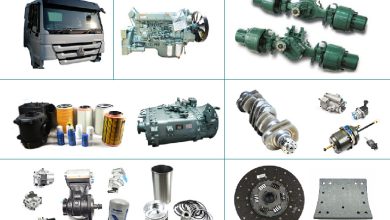You’ve heard the statistics about the dangers of working without protective eyewear: In the United States, more than 200,000 eye injuries occur each year on the job. Millions more could be prevented if workers used safety eyewear for tasks like grinding, welding, drilling, and other common work activities that require workers to look down into a restricted area where there are hazards. So why aren’t all companies creating a corporate safety eyewear program? There are steps that you can take to implement a corporate safety eyewear program in 2023 — here’s how they work!
Commit to a Corporate Safety Eyewear Program
The time to commit to a buy cheap corporate safety eyewear program online is now. Eyewear can help protect your employees from injury and illness, as well as help them perform their jobs more safely. The right type of eye protection can also improve efficiency and productivity by eliminating or reducing visual distractions like glare, reflections, or fogging up lenses.
In order for your company’s safety eyewear program to be successful, you’ll need to make sure that everyone understands why it’s important for them to wear their glasses at all times when working in industrial areas where there are potential hazards present (elevated risk of impact).
Assess the Business Need
The first step in implementing a corporate safety eyewear program is to assess the business’s needs. It’s important to gather information about your company and its employees so that you can determine which employees may need glasses, how many they would need, and what types of glasses are best suited for them.
To do this, you’ll want to consider:
- What type of work do your employees do? If they’re working around heavy machinery or in environments with high levels of dust or particulates (like construction sites). They may be at risk for eye injuries if they don’t wear protective eyewear. In addition, if any of your workers have pre-existing medical conditions like diabetes or cataracts that could affect their vision without proper treatment and care. Or if there’s any chance that these conditions could develop over time. Then it might be especially important for those workers’ eyesight not only now but also down the road as well.
- How many people does each department have? Are there enough people working in one area so that we would need fewer pairs per employee than in another area where only two or three people work together? Or perhaps there are so many people working together within one department that each individual should get pairs of corporate prescription safety glasses program online instead (one pair being worn while another rests on top). This depends largely on volume.
- What kind of work environment does each department operate within? Do some areas require more protection than others because they’re potentially more dangerous due to chemicals being used there regularly.
Understand the Hazards
The first step in implementing a corporate safety eyewear program is to understand the hazards and risks present in your workplace. As part of this process, you will need to identify:
- The hazards that are present in your workplace.
- The risks that employees face from these hazards.
- The risks that workers face from these hazards.
Determine Who Is at Risk
Before you can implement a corporate safety eyewear program, you need to determine who is at risk of eye injury. This should include all employees who perform activities that put them at risk of injury and the types of injuries they could suffer. It’s also important to identify the causes of each type of injury and how frequently they occur. Finally, it’s crucial that you assess severity levels so that if accidents do happen–and they will!–you’re equipped with the right tools to treat them effectively.
Identify the Best Protective Eyewear for Your Workers and Processes
In order to find the best protective eyewear for your business, you should consider the following factors:
- Materials used in the manufacturing of eyewear. This can include metal or plastic frames, as well as different types of lenses (such as polycarbonate).
- The fit of eyewear. Ensure that employees find their safety glasses comfortable enough to wear all day long without any discomfort or irritation. They should also be able to easily see through their lenses without having to adjust them often or take them off altogether due to discomfort.
- Fogging up from sweat buildup on the surface area surrounding their eyes when they’re working in hot environments such as a factory floor where there are high temperatures due to heaters running 24/7 during winter months so no matter what season it is outside you still need protection from UV rays coming through windows etc.
Identify Data Sources for the Assessment and Selection Process
The next step in the process is to identify data sources for the assessment and selection process. The first step is to determine what information you need from each source, such as:
- The number of injuries occurring at your facility each year.
- Whether these incidents were preventable or not.
- How many workers were affected by these injuries (e.g., total number versus just those requiring medical treatment)?
You should then determine which data sources will provide this information most effectively, based on their availability and accuracy levels when compared with other available options like OSHA logs or injury reports filed by employees themselves (which can often be incomplete).
Once you’ve identified suitable data sources, use them! You’ll want to look at both their current state. Whether they’re currently being used within your organization. And future potential uses if they’re not already being leveraged at all levels across multiple departments within your business model(s).
Train Employees on How to Use Protective Eyewear Correctly and Effectively
- Train employees on how to use protective eyewear correctly and effectively.
- Provide hands-on training so that your workers are able to put on their safety glasses with ease, and know how they should fit on their face.
- Make sure that each worker has a pair of their own personal protective eyewear. Which they can take home at night or between shifts if necessary.
There are steps that you can take to implement a corporate safety eyewear program.
There are steps you can take to implement a corporate safety eyewear program. A comprehensive corporate safety eyewear program includes the following components:
- Safety eyewear requirements – The first step in establishing a corporate safety eyewear program is to determine what type of protective lenses are needed for your employees’ work environments and tasks. Each industry has different standards for eye protection. However, there are some commonalities among most industries’ requirements. These include impact resistance, ultraviolet light protection (UVP), and optical clarity/visual acuity. Comfort and ease-of-use features such as centering springs on temple arms. Or nose pads that allow users to adjust how tightly they fit their frames against their faces.
- Safety eyewear training – While it’s important for employees who wear prescription glasses or contact lenses at work to know. How to select the right pair from among hundreds if not thousands of options available today. Especially if those workers have never done so before. It’s equally vital for everyone else involved with implementing this policy. Managers who will oversee its implementation. Human resources personnel are responsible for communicating information about policy changes. Purchasing agents tasked with procuring inventory levels required by law enforcement agencies at all levels across America.
Conclusion
We hope that this guide has given you a good overview of the process of implementing a corporate safety eyewear program. If you’re still not sure where to start, or if your company needs help with any part of this process, we would be happy to assist! Contact us today and let us know how we can help make sure your workers are protected at work.





